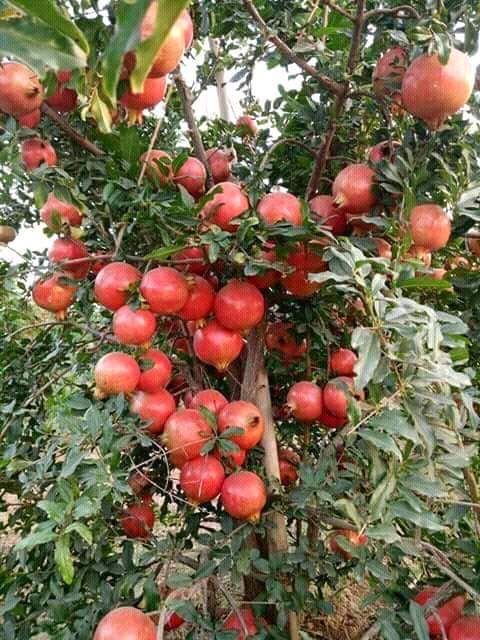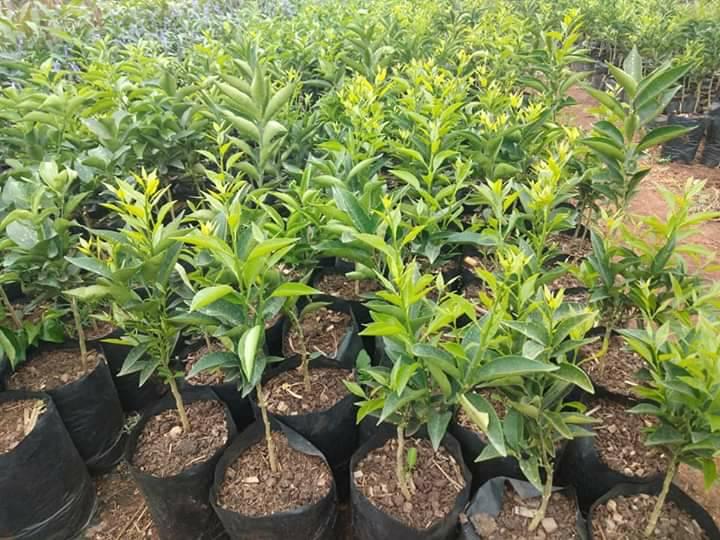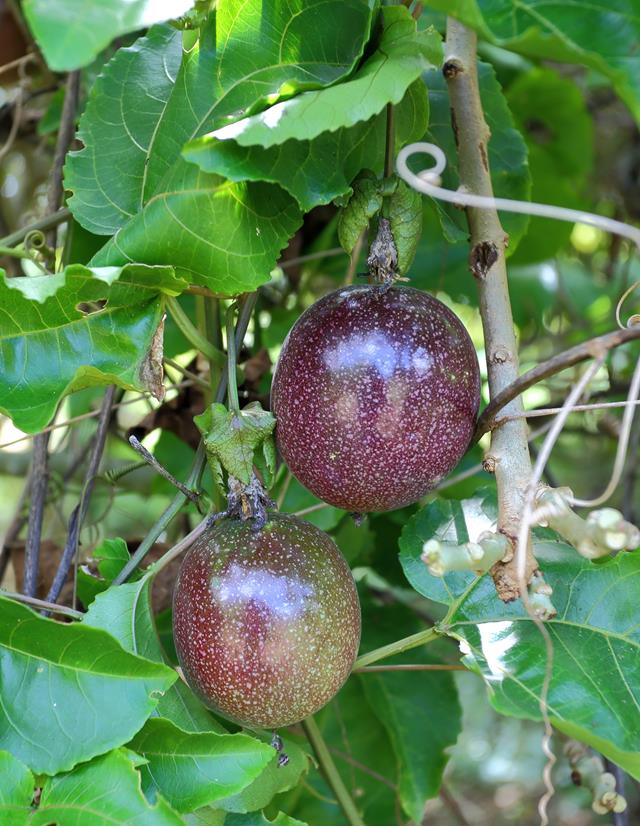Pomegranate tree grows to about five and eight meters tall. A completely established tree bears many round, bright red, purple, or orange-yellow colored fruits depending on the cultivar types. On an average, each fruit measures about 6-10 cm in diameter and weighs about 200 gm. Pomegranate is one of the healthiest fruits on earth. Pomegranate has many incredible health benefits for your body. It is called as a divine fruit because it is the most mentioned fruit in theological books.
Pomegranate has anti-oxidant, anti-viral and anti-tumor properties and is said to be a good source of vitamins, especially vitamin A, vitamin C, and vitamin E, as well as folic acid.
Close spacing is not preferred because excess shade can limit fruit color development, increased likelihood of fruit scarring, and less space for hand harvesting, pruning and the use of large machinery.
Pomegranate trees are currently grown with as little spacing as 1.5 m in-row and 3.6 m between rows, with wider spacing at 4 to 5.2 m in-row and 5.8 m between rows. However, we suggest planting at 3 to 5 m in-row spacing and 5 to 7 m between rows.
This amazing fruit consists three times as many antioxidants as both wine or green tea. Consuming pomegranate also lowers the risk of all sorts of diseases.
Pomegranate Plant Life Diseases And Pests
Fruit rot – Fruit rot is a serious problem of pomegranate and can result in more than 80% fruit loss in Florida. In addition to fruit rots caused by Colletotrichum spp. and D. punicae, a third fungal pathogen, Pilidiella granati, is often isolated from rotten fruit. The fruit surface starts to turn brown, with the rot progressing into the rinds and to the arils. The fruit start to decay, and abundant black pycnidia become visible on the fruit surface as small raised black dots (Figure 9). Stem blight and leaf spot symptoms may also occur. Leaf spots caused by P. granati have concentric rings of pycnidia on the lesion. Toward the end of the growing season, fruit infected by P. granati become dry and mummified. Nearly 50% of these mummified fruit drop, while the rest remain attached to the tree (Figure 10). Multiple pathogens are often isolated from these mummified fruit, including Colletotrichum spp., N. parvum, L. theobromae, D. punicae, and P. granati. These observations reinforce the need to remove all mummified and rotted fruit from orchards during and between seasons to limit the potential spread and carryover of inoculum.
The frequent agitators are Alternaria fruit rot, genus Aspergillus fruit rot and Boytrytis.
Alternaria fruit rot – Alternaria is additionally referred to as plant disease and causes injury to the fruit within the sort of wounds and decay on the inside of the fruit. It happens once serious rains simply once fruit is getting down to type.
Aspergillus fruit rot – Aspergillus fungus has similar temporal arrangement and effects as Alternaria plant life problems.
Botrytris – Botrytis, a grey mould that is acquainted to any sodbuster of tropical fruits, infects trees throughout flowering. Spores infiltrate the flowers and keep in hibernation throughout mature. It’s activated throughout the post-harvest wash and spreads like wild hearth through all the harvested fruits.
Another occasional plant life issue is Cercospora fruit spot, which cannot solely cause black unsound spots on the surface of fruit however additionally compressed black areas on twigs and defoliation. It will really cause a tree to die over time.
The most problematic pests for pomegranates are aphids, citrus flat mite (Brevipalpus lewisi), leaf footed bug (Leptoglossus clypealis) and omnivorous leafroller (Platynota stultana).
Aphids are a widespread and persistent pest in pomegranates, and are commonly controlled using parasites or lady beetles (depending on the time of the season). The two primary aphid species that result in fruit damage are the cotton aphid (Aphis gossypii) and another unidentified species referred to as the pomegranate aphid.
Both cause sooty mold and soft rot to occur where fruit share common surfaces. Citrus flat mite are very small in size, difficult to trace (Carroll 2010), and cause skin russeting, or leathery skin (Carroll 2010) resulting in unmarketable fresh fruit. Sulfur application during and after bloom can be used as a preventative measure against citrus flat mite.
Leaf footed bug affects internal fruit quality because they penetrate immature fruit and damage arils. Insecticides can be sprayed for prevention . Omnivorous leafroller enter fruit near the calyx, leading to fruit diseases. Prevention is difficult because treatment must be applied in the larvae stage to prevent damage.
Pomegranate Fruit Diseases Management
Integrating cultural practices with chemical control and resistant varieties will be crucial for sustainable disease management and successful production.
Use a copper anti-fungal fungicide according with the directions and promote smart circulation by pruning within the dormant season to open the cover. Several of the precise causes of those diseases don’t seem to be fully understood however anti-fungal agent use and correct cultivation of the plants will facilitate the tree combat minor infestations. Smart healthy trees are less probably to be faced by minor plant life problems.
With the case of Cercospora, removal of morbid leaves, twigs and fruits will facilitate management , together with anti-fungal application.




